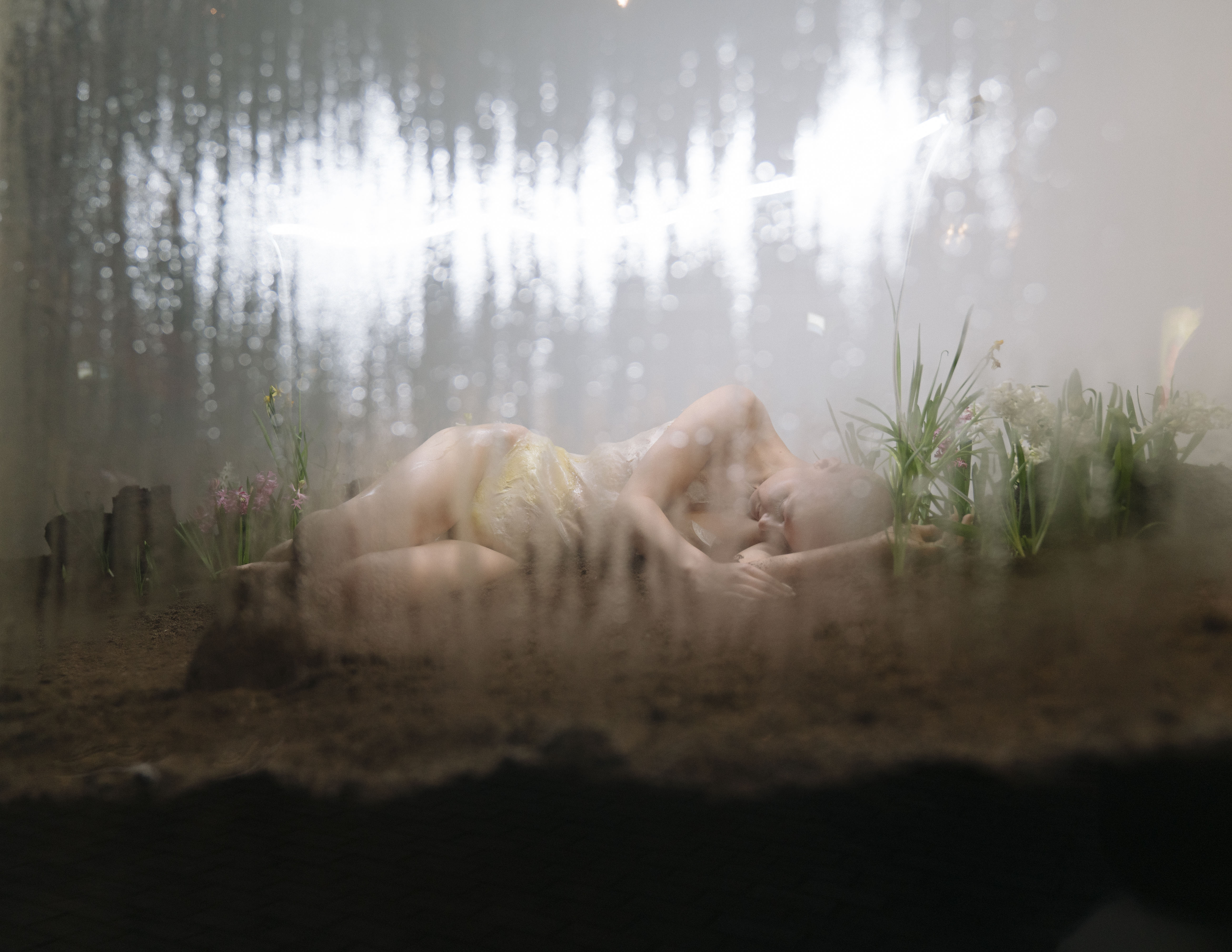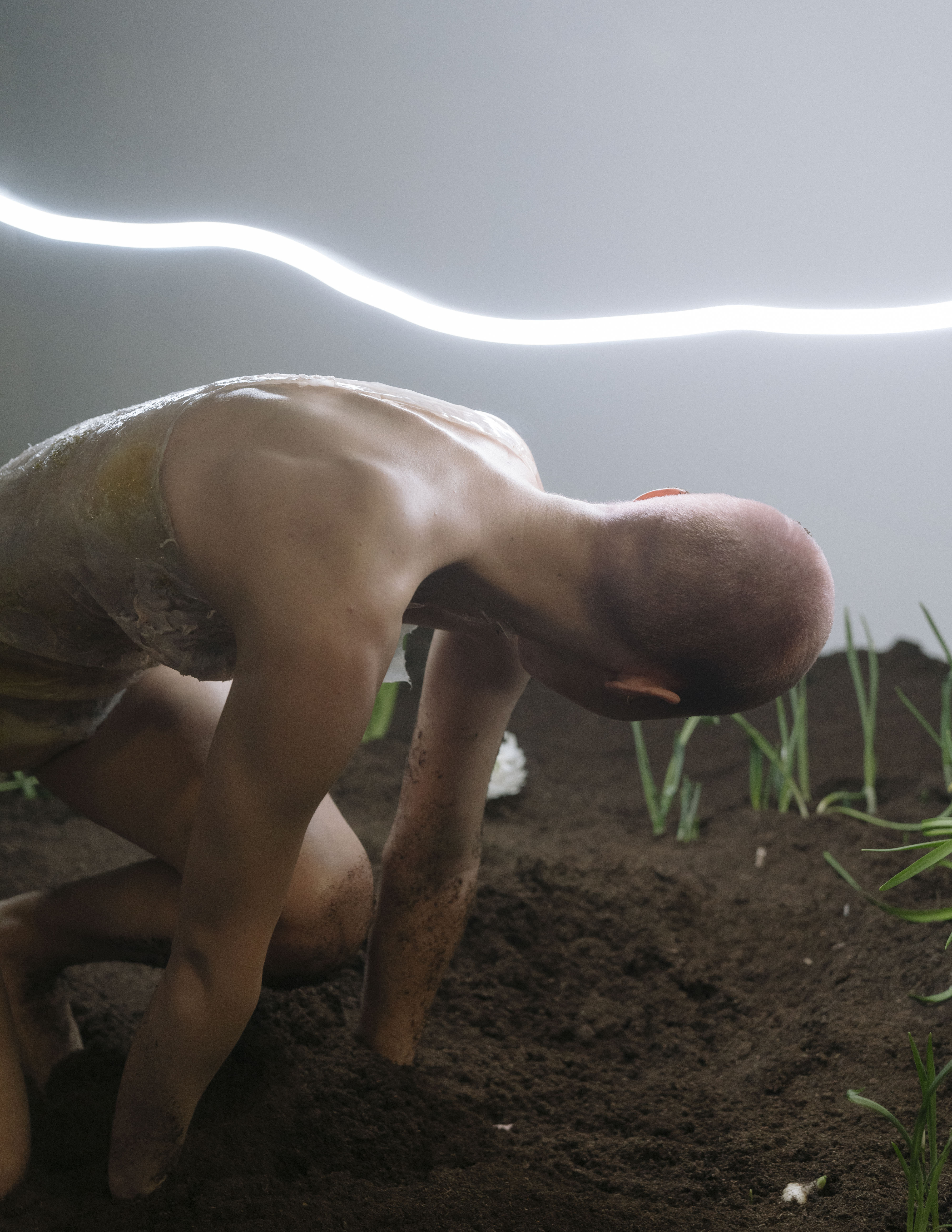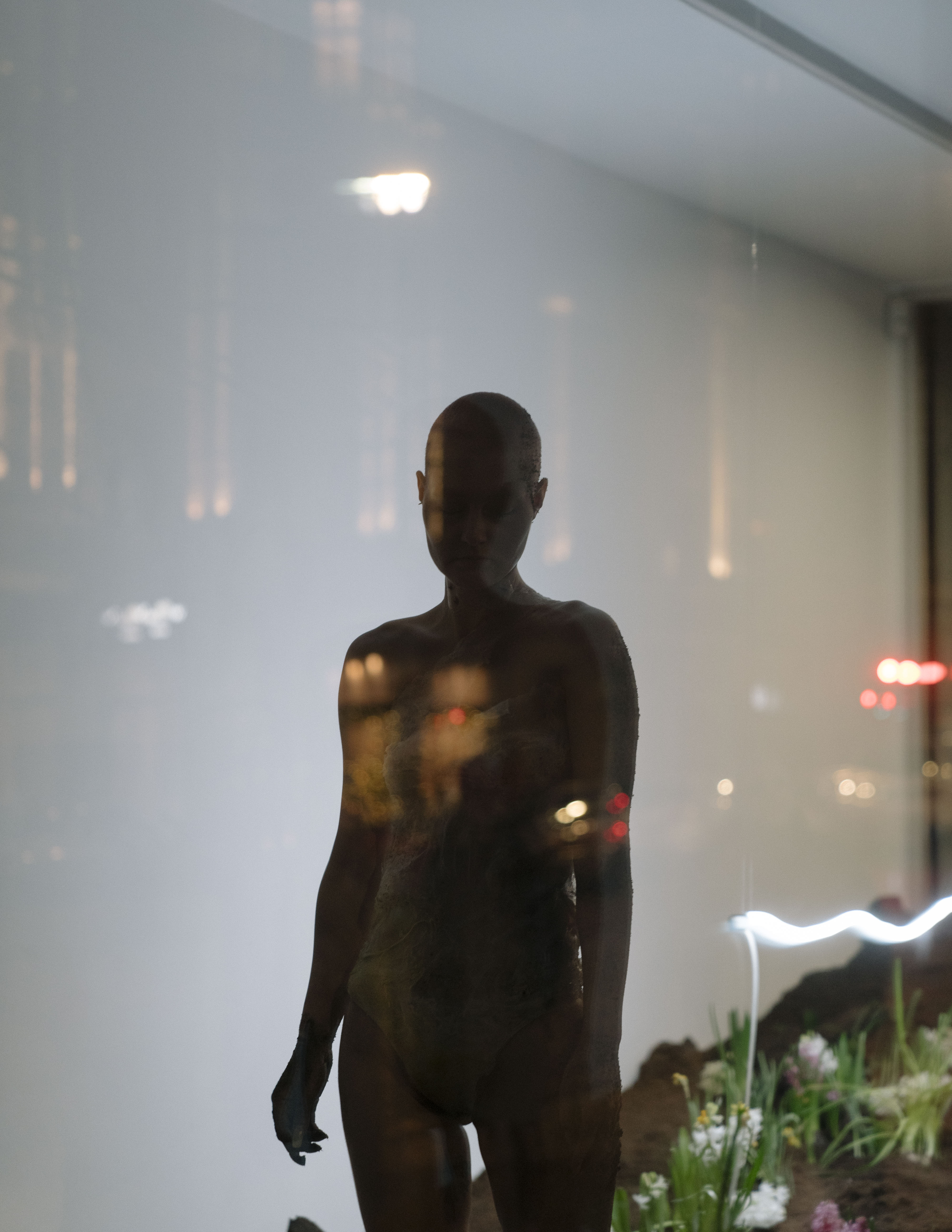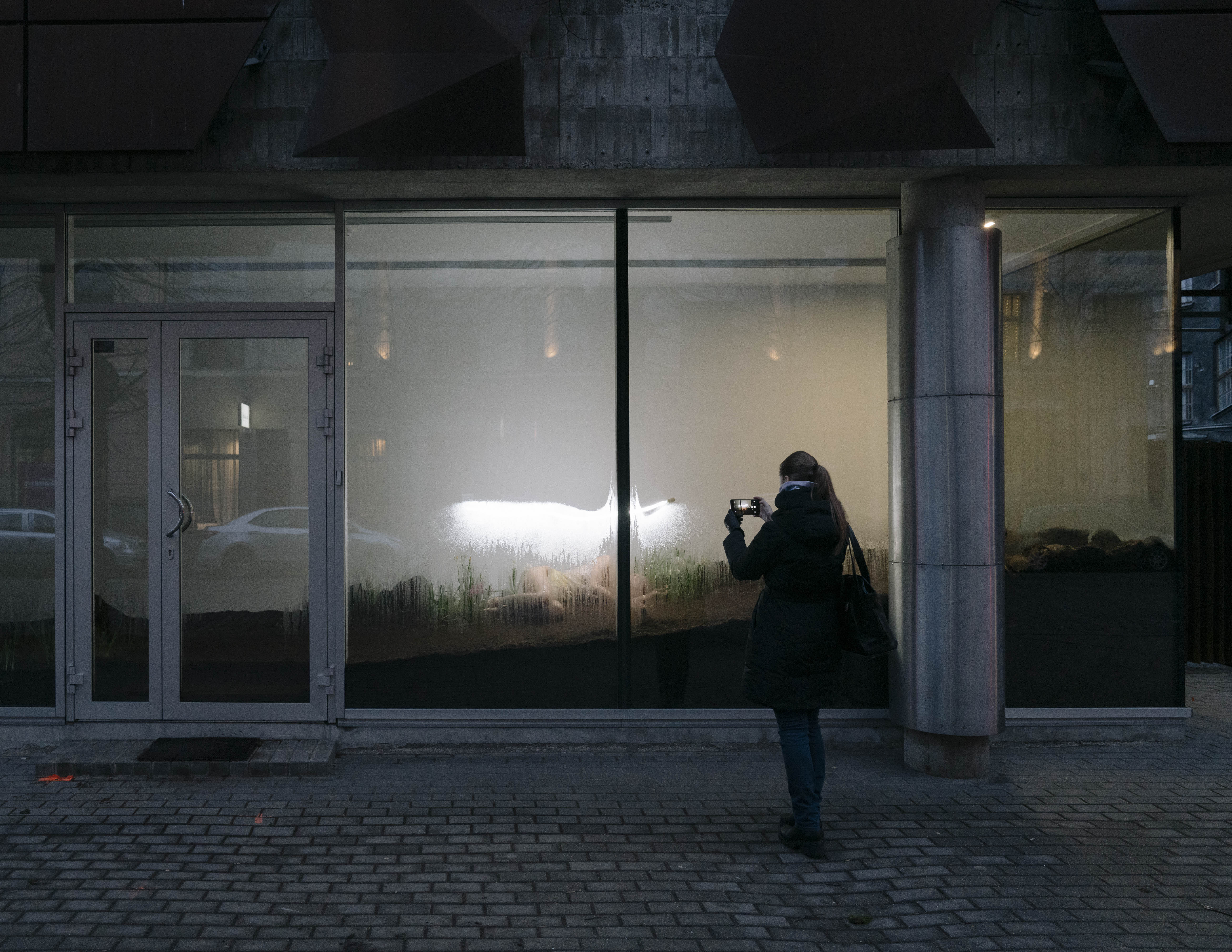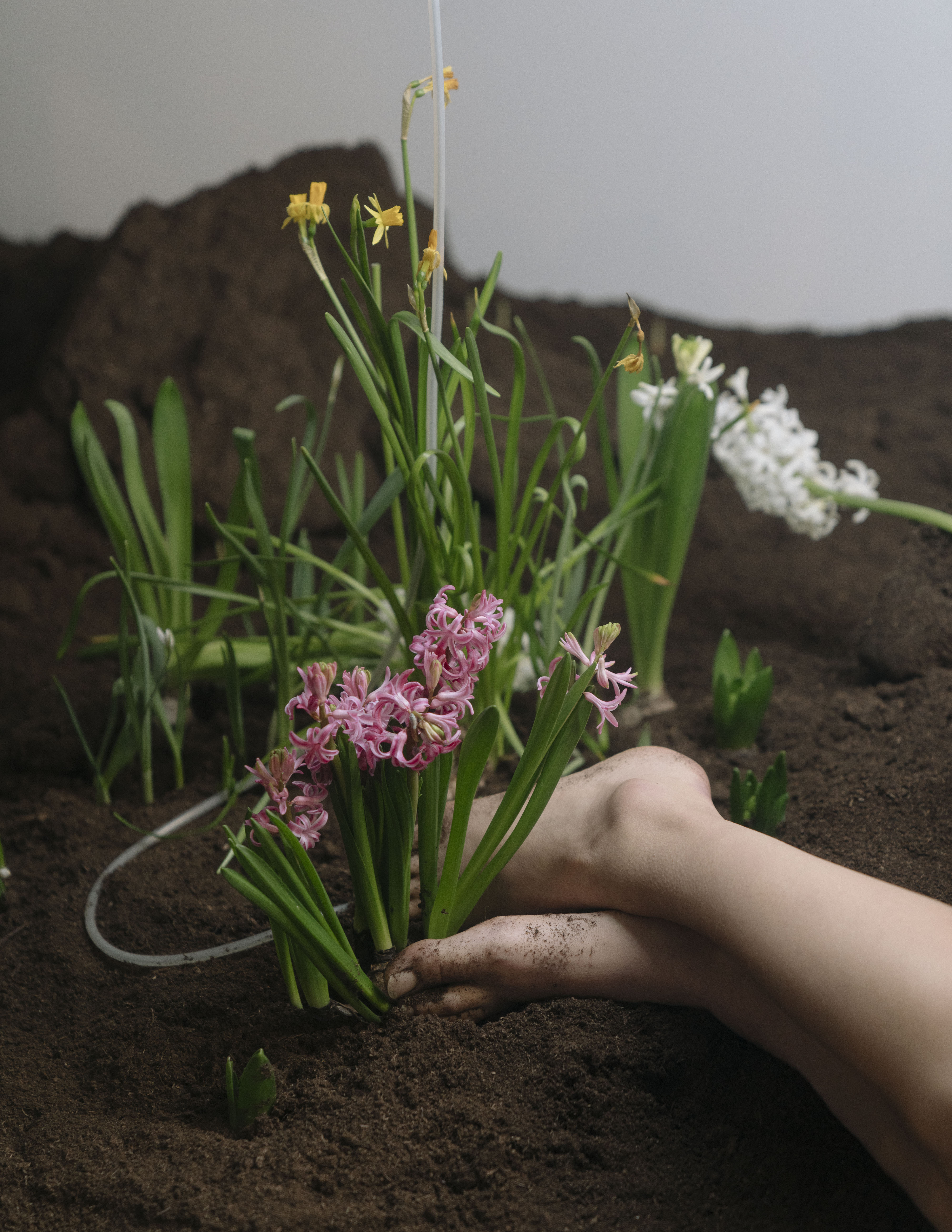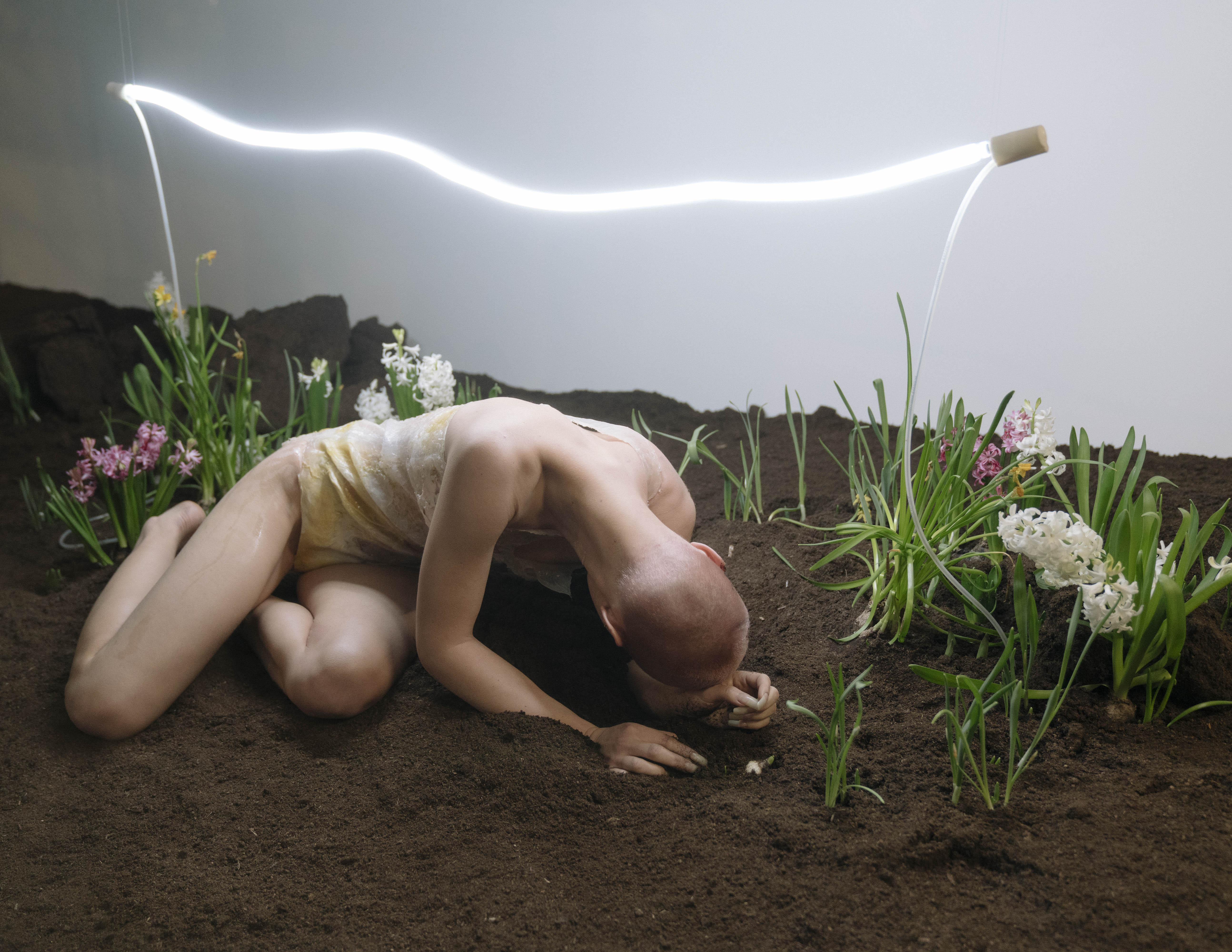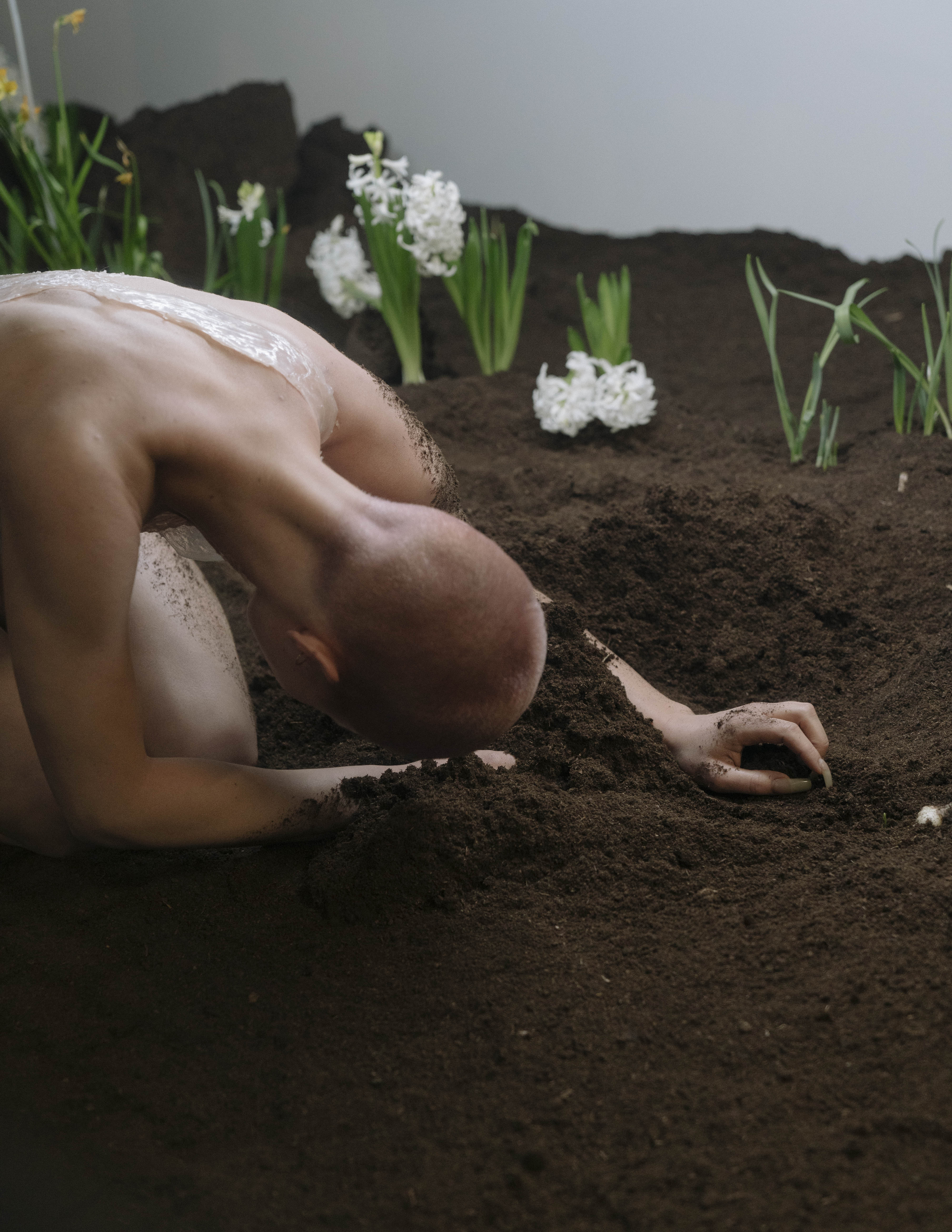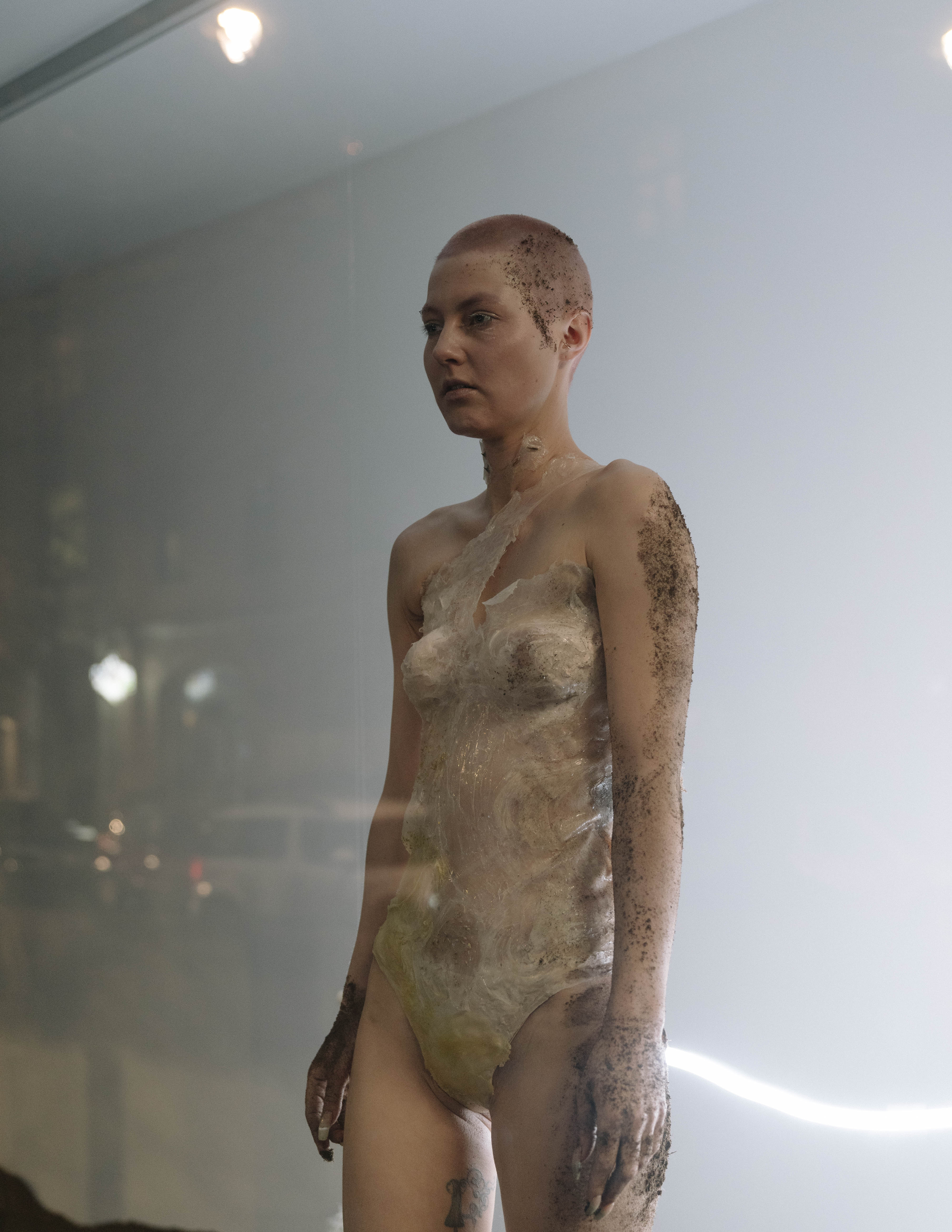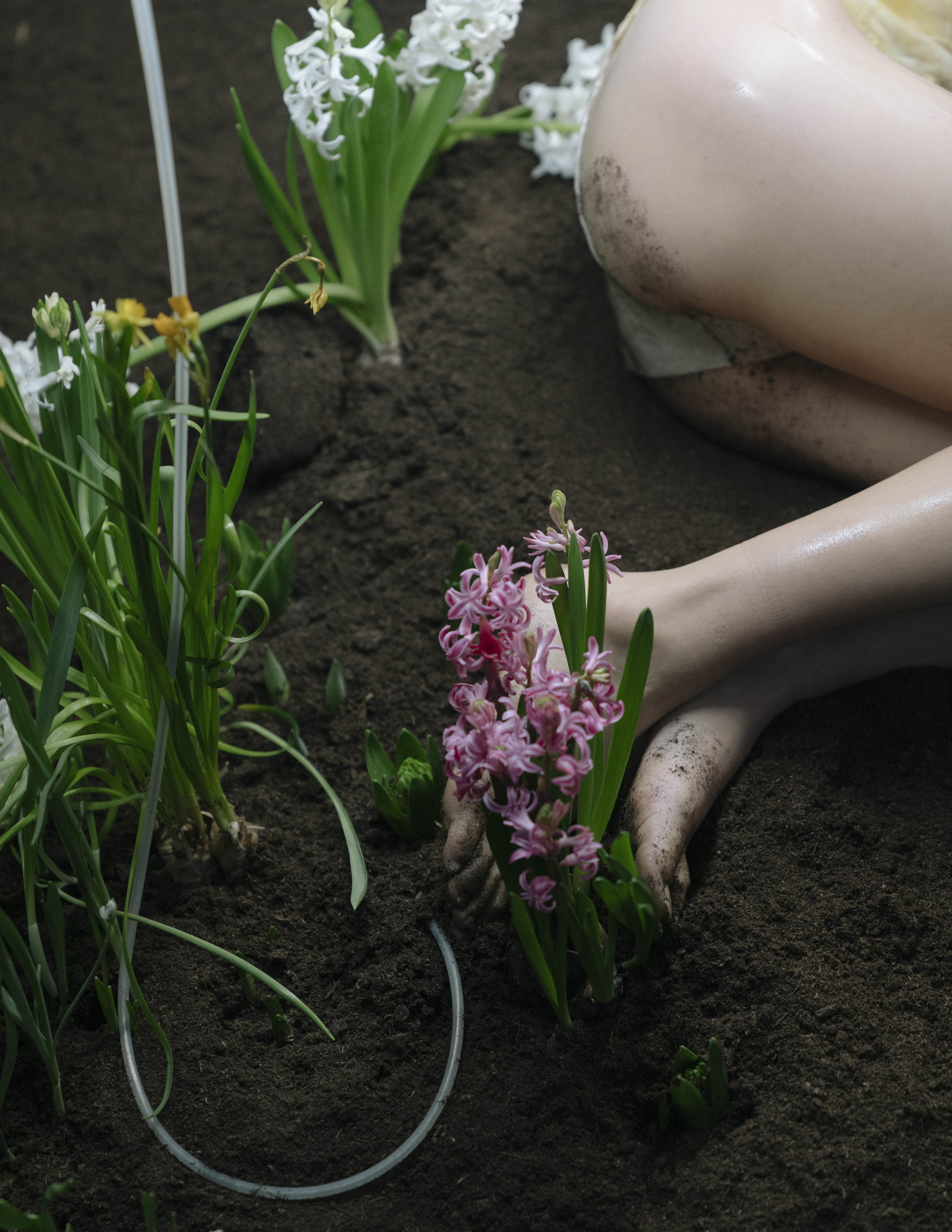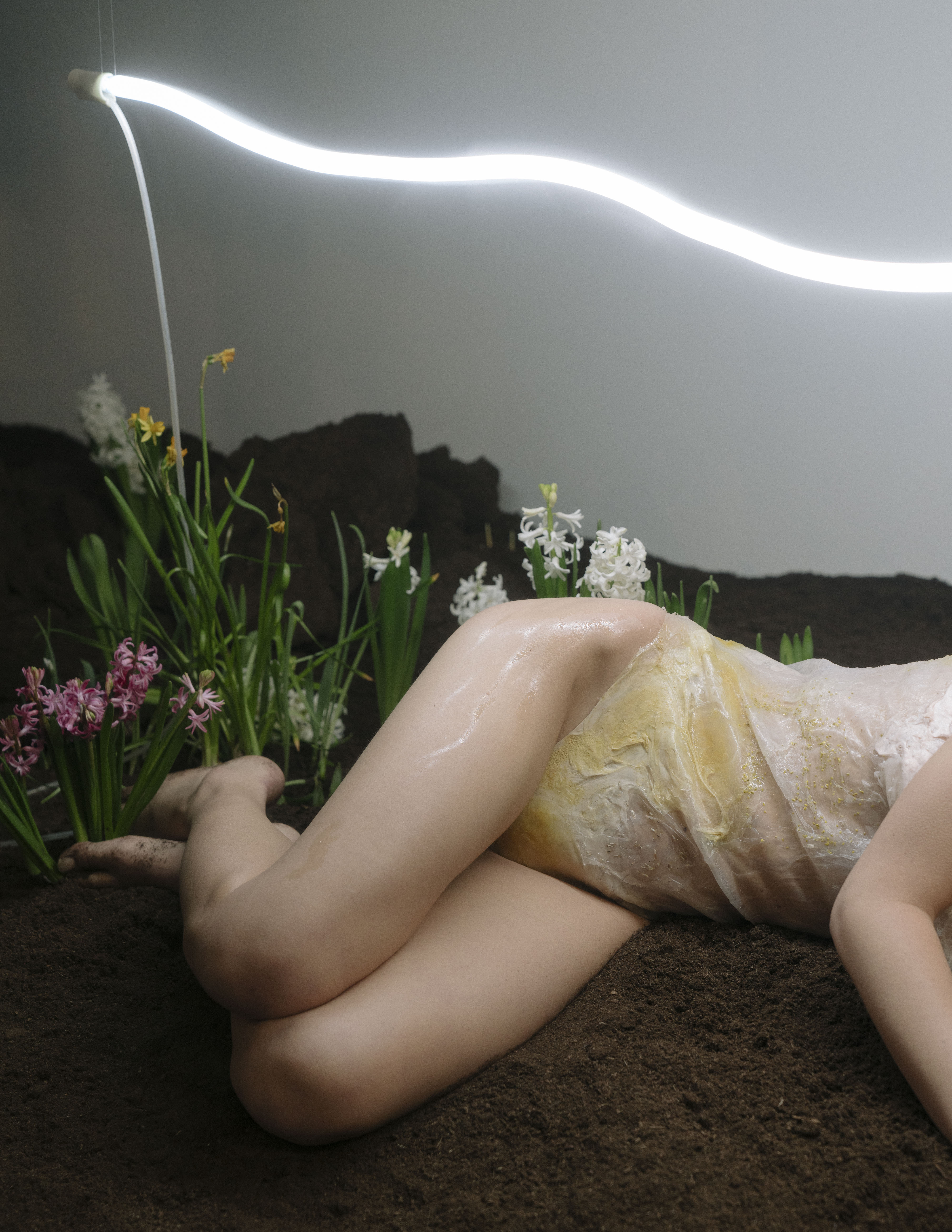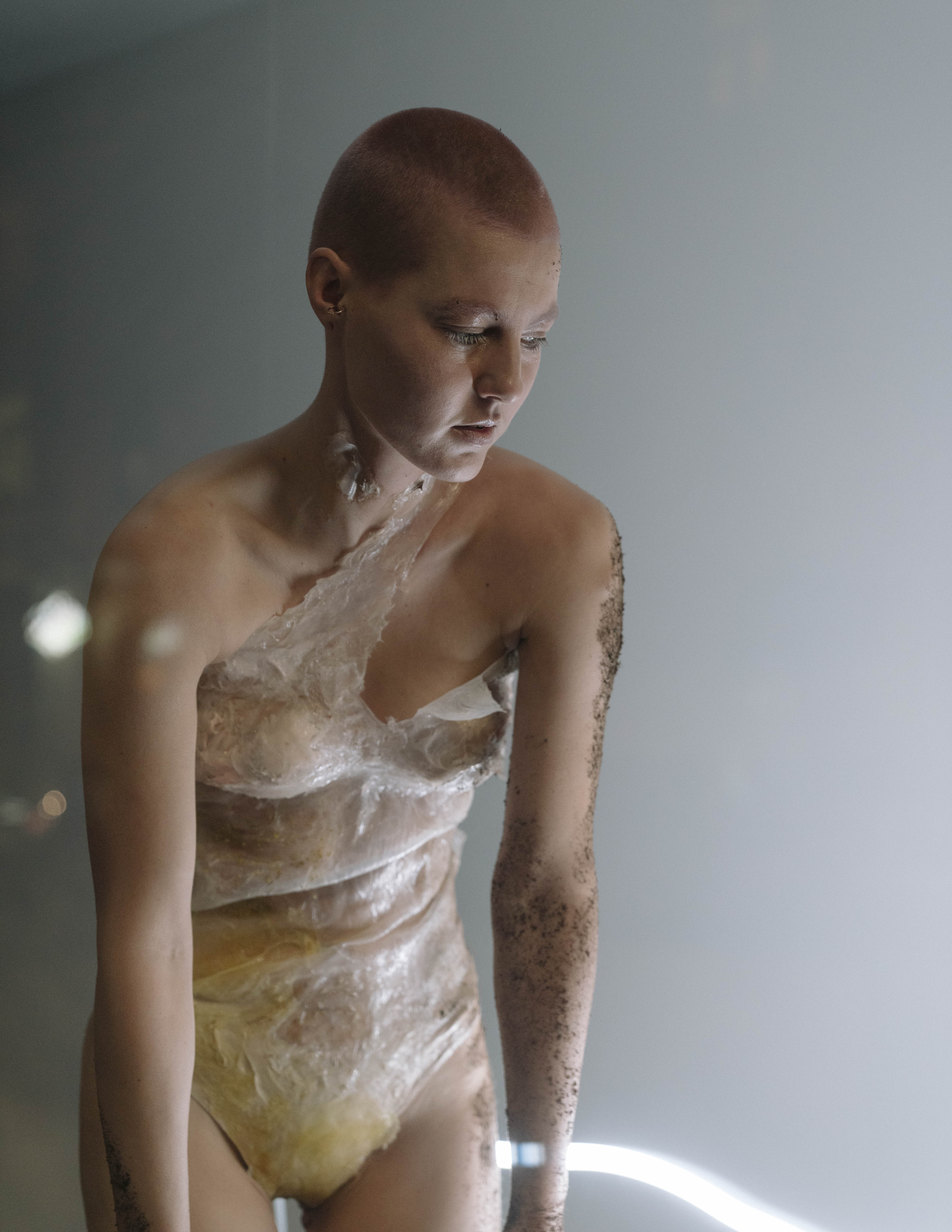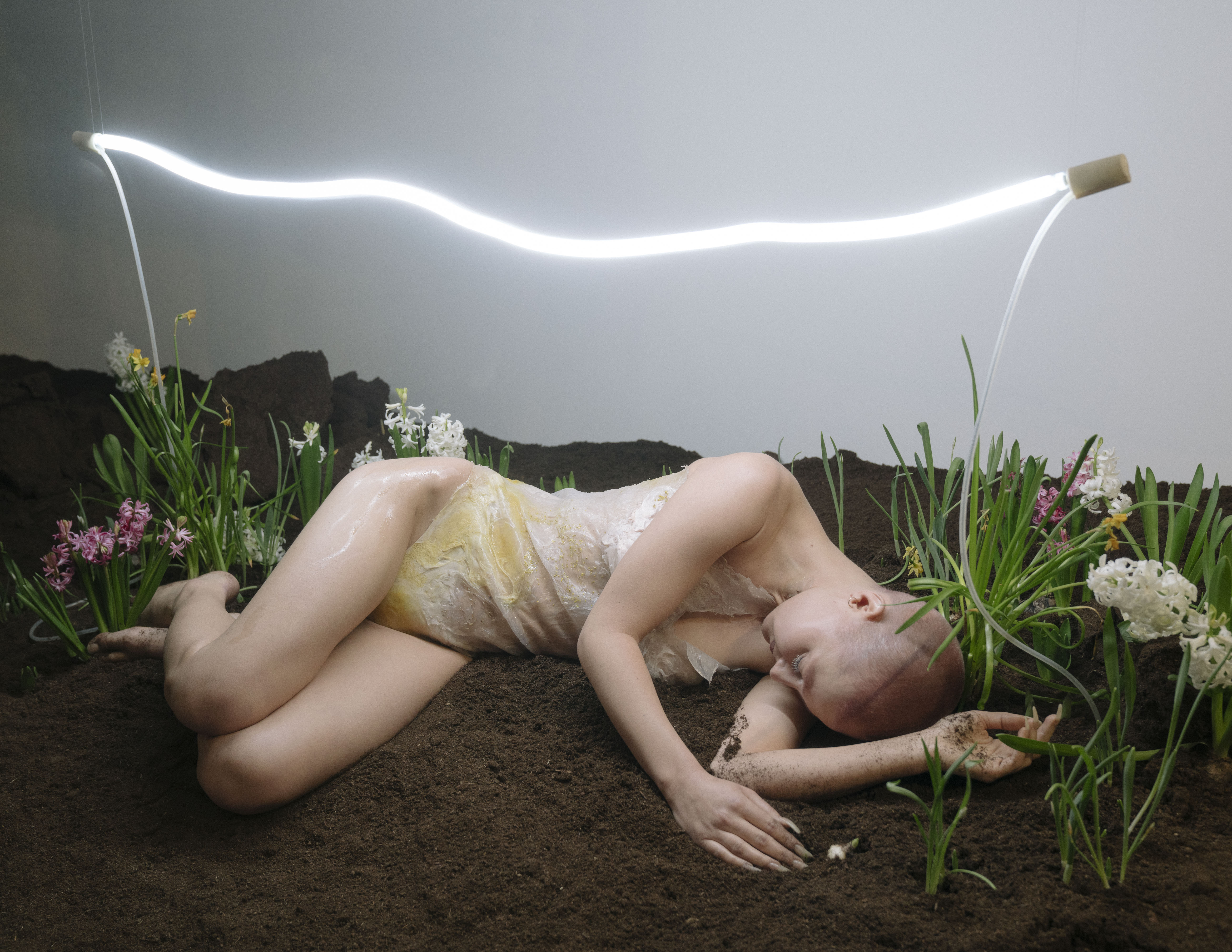Off Spring
The unity of humans and nature can be expressed in mathematical units and these numbers can serve as an artistic image – in his poem Primavera, the Scottish poet Robin Robertson meditates on how the rate of seasonal change is equivalent to the pace at which the human walks If we were to quicken our step, would spring arrive earlier? The findings of climate scientists confirm the prediction of this causal link, as the speed of our lifestyle, our insatiable consumption and desire to experience things faster and more intensely, has resulted in irreversible climate changes. At the same time, premonitions of ecological catastrophe remind us that human existence is encompassed by a complex living organism, which will not yield to human power or desires. It is important to remind ourselves of this, from time to time, and to sense our puniness in the face of nature – everyone recognises the pleasure of this revelatory experience.
In her creative work, artist Linda Boļšakova approaches nature from a perspective that has nothing to do with might or negligibility. The experience of nature becomes the experience of her body and, in place of hierarchical relations, the artist strives for interconnectedness and unity, and this fusion is transformed into a poetic vision. Linda Boļšakova’s process-based installation brings the feeling of spring into winter, during its darkest phase. The physical form of the work of art also functions through the logic of natural processes, as the installation evolves over the course of time, with spring flowers gradually sprouting from the earth. The artist becomes one of these shoots, becoming part of the cycle of nature’s reawakening. At the same time, this body symbolises changes that are a premonition of an unseen future – changes which we, possibly, may not be ready for. This sense of spring is infused with allusions to the uncanny side effects of this uncertain future state, the transitional gap between the present and a moment before the future, whose unknowability gives rise to a feeling of anxiety and slight nausea. Spring is a meteorological metaphor and the impression of the embryonic pose in the ground becomes a symbol for the moment before the birth of spring. Future scenarios have become so impossible that maybe we can only sense them with the help of art, seeking ways in which the reality of the imagination can encounter its actual equivalent.
Linda Boļšakova’s installation emphasises woman’s closeness to nature, the fragility and beauty of life, attempting to capture life as a movement, as a biologically fine process. It is not easy to approach these classic, even ostensibly self-explanatory, themes from the position of art, where one is accustomed to subordinating everything to one’s ideas and the needs of self-expression. Linda turns her body into a conduit for expressing the meaning of natural processes, seeking the symbiosis of these biological units, a symbiosis based on equality and reciprocity. This is evidently a perspective influenced by the idea of ecofeminism, but devoid of didactic messages – in a sensory manner, the proximity of a woman’s body and nature is embodied by fragility, which is transformed into an installation of slow confluence. The futuristic vision created by the artist provides the opportunity to approach a sense of the change to which we are subjecting the planet, which we, in a few decades’ time, will no longer recognise if we are even capable of existing at all.
“The moment before spring arrives. I enter a deep sleep to transform into a flower and to be able to survive a catastrophe of my own making. I will wake up in 280 years’ time on this same date, December 13th. It will be spring and the soil will be alive, and I won’t recognise you, but you will recognise me (as yourself) with the peculiar fragrance of pink hyacinths. It will be reminiscent of the fragrance of your mother’s womb, letting you sense it as if for the first time in this long deep time memory.”
Text by Santa Hirša
Photos Toms Harjo
